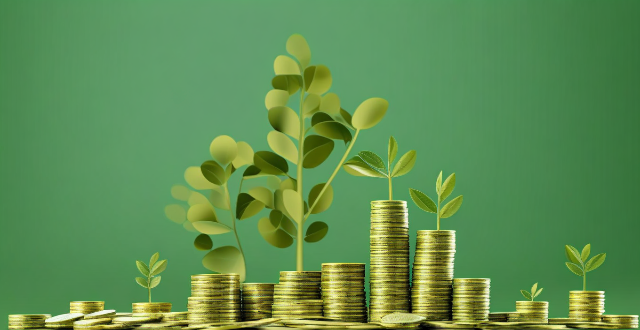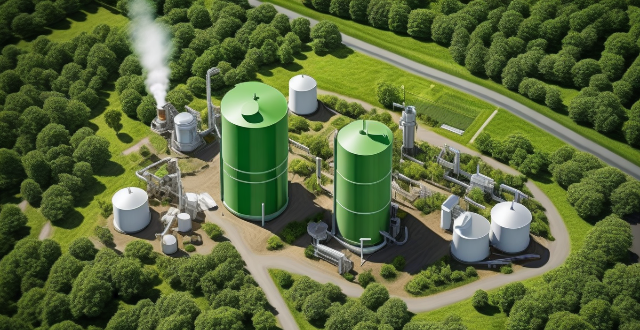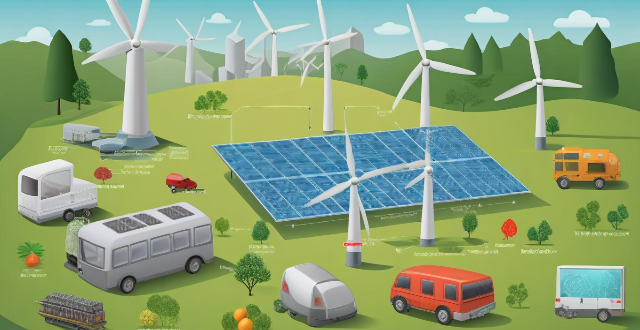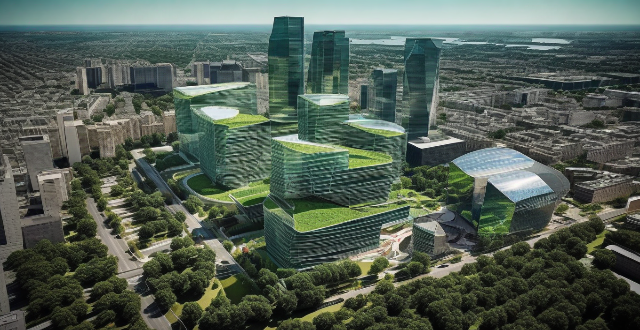Green Reducing

How does green technology help the environment ?
Green technology, or clean technology, includes various techniques and products designed to reduce environmental harm. Its benefits include reducing greenhouse gas emissions, conserving natural resources, protecting ecosystems, reducing waste, and promoting sustainable practices. These technologies help minimize pollution, save energy, preserve water, maintain biodiversity, and encourage recycling and responsible waste management. As green technology advances, its positive impact on the environment is expected to increase.

What role do banks play in promoting green finance ?
Banks promote green finance by offering loans for sustainable projects, investing in eco-friendly companies, and introducing green products. They also educate customers on sustainability and collaborate with governments and NGOs to support green initiatives.

What is green finance ?
Green finance is the use of financial instruments and strategies to support environmentally friendly projects. It includes sustainable investing, green bonds, green banks, carbon credits, impact investing, climate-related disclosures, ESG criteria, green indexes, green funds, green insurance, green tax incentives, green microfinance, green real estate, green technology, and green partnerships. The goal of green finance is to promote economic growth while minimizing negative impacts on the environment.

How does green finance contribute to sustainable development ?
Green finance plays a pivotal role in driving sustainable development by channeling financial resources towards environmentally friendly projects and initiatives. Here's a detailed look at how it contributes: 1. Promoting Renewable Energy 2. Supporting Green Infrastructure 3. Advancing Clean Technology 4. Influencing Corporate Behavior 5. Regulating Financial Markets 6. Educating Investors and the Public

How can we promote the use of green technology ?
Green technology is essential for mitigating climate change and ensuring a sustainable future. To promote its use, strategies include education campaigns, integrating sustainability into school curricula, offering financial incentives and tax breaks, implementing regulations, funding research and development, encouraging corporate responsibility, supporting community projects, showcasing successes, participating in global agreements, promoting eco-labeling, and encouraging green marketing. These efforts can drive innovation, create jobs, and foster economic development sustainably.

What are the economic benefits associated with urban green spaces ?
Urban green spaces provide economic benefits to cities, including increased property values, reduced air pollution, and enhanced tourism. These spaces improve the living environment, leading to higher home and rental prices, increased tax revenue, and healthcare cost savings. Additionally, they attract tourists, boosting the local economy through job creation and multiplier effects. Investing in urban green spaces is beneficial for both the environment and city prosperity.

How can education contribute to reducing carbon footprint ?
Education plays a pivotal role in promoting environmental sustainability by raising awareness, encouraging sustainable practices, and empowering future leaders. It can contribute to reducing carbon footprints through curriculum integration, real-world examples, interdisciplinary projects, community outreach, media campaigns, partnership with NGOs, implementing green initiatives in schools, teaching practical skills, developing critical thinking, nurturing eco-advocacy, and preparing students for careers in environmental policy making. By focusing on these aspects, education can significantly contribute to reducing carbon footprints and paving the way for a more sustainable future.

What are the benefits of green jobs ?
Green jobs, also known as sustainable jobs or eco-friendly employment, refer to positions that contribute positively to the environment and help in mitigating climate change. These jobs are often focused on renewable energy, energy efficiency, pollution control, waste management, and environmental conservation. The benefits of green jobs are multifaceted and can be categorized into economic, environmental, and social dimensions. In summary, green jobs offer a triple win by stimulating economic growth, protecting the environment, and enhancing social well-being. As societies continue to prioritize sustainability, the importance of these jobs will only increase, making them a cornerstone of future employment landscapes.

What are the benefits of using green packaging ?
Using green packaging has become increasingly popular in recent years as people have become more aware of the environmental impact of traditional packaging materials. Green packaging refers to eco-friendly and sustainable packaging solutions that are designed to reduce waste, conserve resources, and minimize pollution. Here are some of the benefits of using green packaging: Reduced Environmental Impact: - Lower Carbon Footprint: Green packaging materials often require less energy to produce than traditional materials, resulting in a lower carbon footprint. - Biodegradable and Recyclable: Many green packaging options are made from biodegradable or recyclable materials, reducing the amount of waste that ends up in landfills. - Reduced Pollution: Green packaging helps to reduce pollution by minimizing the use of harmful chemicals and toxins in the production process. Cost Savings: - Long-Term Cost Efficiency: While green packaging may initially be more expensive than traditional options, it can lead to long-term cost savings due to reduced waste disposal costs and increased efficiency in production processes. - Tax Incentives and Grants: Many governments offer tax incentives and grants for businesses that implement eco-friendly practices, including the use of green packaging. Improved Brand Image: - Enhanced Corporate Social Responsibility (CSR): Using green packaging demonstrates a commitment to sustainability and social responsibility, which can enhance a company's reputation and appeal to environmentally conscious consumers. - Increased Customer Loyalty: Consumers who value eco-friendly practices are likely to choose products with green packaging over those with traditional packaging, leading to increased customer loyalty and sales. Innovation and Creativity: - Stimulates Innovation: The need for sustainable packaging solutions encourages companies to invest in research and development, leading to innovative new products and processes. - Design Flexibility: Green packaging materials can often be molded into unique shapes and sizes, allowing for greater creativity in product design. Health Benefits: - Reduced Exposure to Harmful Chemicals: Green packaging materials are often free from harmful chemicals and toxins, reducing the risk of exposure for both consumers and workers involved in the production process. - Improved Food Safety: Eco-friendly packaging materials can help maintain food quality and safety by preventing contamination and extending shelf life.

What are the economic implications of reducing greenhouse gas emissions ?
Reducing greenhouse gas emissions is essential for mitigating climate change but has economic implications. The shift to renewable energy requires initial investments but can create jobs and reduce reliance on fossil fuels. It fosters innovation and green jobs but may impact fossil fuel industries negatively. Regulatory changes like carbon pricing and compliance standards can increase operational costs for businesses. Globally, it affects market dynamics and trade, with potential for carbon leakage and competitive advantages in green technology markets. Consumer behavior might shift towards sustainable consumption and energy efficiency. Social welfare considerations include equity concerns and potential health benefits from reduced air pollution. Balancing environmental goals with economic factors is key to a successful transition to a low-carbon economy.

How can individuals contribute to reducing the effects of climate change ?
The article discusses ways individuals can contribute to reducing the effects of climate change, including adopting renewable energy sources, reducing carbon footprint, conserving water, reducing waste and recycling, sustainable living practices, advocacy and education, and energy efficiency in homes.

How can green technology reduce carbon emissions ?
In this article, we explore how green technology can help in reducing carbon emissions. We discuss renewable energy sources such as solar, wind, hydro, geothermal, and biomass energy, which produce little to no greenhouse gas emissions during operation. We also emphasize the importance of improving energy efficiency and conservation, utilizing carbon capture and storage technologies, and promoting electric vehicles. By implementing these green technologies, we can significantly reduce our carbon footprint and create a more sustainable future for generations to come.

What are the benefits of investing in green finance ?
The text discusses the benefits of investing in green finance, which supports environmentally friendly projects. It highlights three main categories of benefits: environmental, economic, and social. Environmental benefits include reducing carbon emissions, conserving natural resources, and protecting biodiversity. Economic benefits encompass job creation, innovation stimulation, and reduced energy costs. Social benefits involve improving public health, promoting social equity, and enhancing the quality of life. The article emphasizes that investing in green finance contributes to sustainable development and a better future for all.

How can businesses contribute to reducing climate loss and damage ?
Businesses have a crucial role in mitigating climate loss and damage. Here's how they can contribute significantly: 1. **Adopting Sustainable Practices** - Reducing Energy Consumption - Waste Management - Water Conservation 2. **Investing in Clean Technology** - Research and Development - Green Infrastructure 3. **Promoting Sustainable Supply Chains** - Eco-friendly Sourcing - Partnership with Green Companies 4. **Supporting Environmental Initiatives** - Sponsoring Clean Projects - Education and Awareness 5. **Engaging in Carbon Offsetting** - Carbon Credits - Reforestation Projects 6. **Advocating for Policy Changes** - Lobbying for Green Policies - Collaborating with Governments 7. **Developing Circular Economy Models** - Zero Waste - Reusable Products

What is the significance of using green technologies in buildings for energy conservation ?
Green technologies play a crucial role in promoting energy conservation within buildings. They aim to reduce the negative impact of human activities on the environment and promote sustainable development. The significance of using green technologies in buildings for energy conservation includes improving energy efficiency, reducing carbon emissions, promoting renewable energy use, enhancing natural resource management, improving indoor air quality and noise reduction, reducing operating costs, and increasing property value. As we strive towards a more sustainable future, adopting these technologies becomes increasingly important.

How can urban green spaces improve residents' quality of life ?
Urban green spaces, including parks and community gardens, play a key role in enhancing the quality of life for city residents by providing physical, mental, social, and environmental benefits. Physical health is improved through increased physical activity, better air quality, and mitigation of the heat island effect. Mental health benefits include stress reduction, enhanced mood, and improved cognitive function. Social well-being is boosted through community building, recreational opportunities, and educational value. Environmentally, urban green spaces contribute to biodiversity conservation, water management, and carbon sequestration. These areas are essential for comprehensive wellness in urban environments and should be a focus in future city planning.

How can an understanding of environmental psychology aid in the design of green spaces that enhance mental health ?
The text discusses the importance of environmental psychology in designing green spaces that enhance mental health. It highlights key principles such as biophilia, perceptions of safety, social interaction, cognitive restoration, and sensory experiences. The article suggests incorporating natural elements, defined areas, communal facilities, quiet zones, and multisensory features to create green spaces that promote relaxation, community building, cognitive engagement, and overall well-being.

What role do urban green spaces play in climate adaptation strategies ?
Urban green spaces play a crucial role in climate adaptation strategies by providing cooling effects, carbon sequestration, flood control, and habitat preservation. To effectively incorporate these spaces into climate adaptation efforts, city planners should conduct assessments, develop comprehensive plans, collaborate with local communities, monitor and evaluate projects, and educate residents about the benefits of green spaces.

What is green finance and how does it relate to climate change ?
Green finance is the financing of projects that have environmentally friendly impacts, such as reducing carbon emissions or conserving natural resources. It involves investing in renewable energy sources, clean technologies, and sustainable infrastructure projects that aim to mitigate climate change and promote a greener economy. The relationship between green finance and climate change includes impact on carbon emissions, promotion of sustainable practices, innovation and technology development, risk management and resilience, market incentives and policy support, stakeholder engagement, and international cooperation. Green finance plays a crucial role in addressing climate change by directing capital towards environmentally beneficial projects and practices.

Can green bonds help fight climate change effectively ?
Green bonds, a type of fixed-income instrument, are issued to fund environmentally friendly projects that aim to reduce greenhouse gas emissions and promote sustainable development. They can effectively contribute to the fight against climate change by incentivizing renewable energy projects, supporting energy efficiency and conservation, investing in low-carbon infrastructure, promoting sustainable agriculture and forestry, and advancing research and development. However, challenges such as ensuring transparency and accountability, achieving scale and impact, integrating with broader climate strategies, and engaging diverse investors must be addressed to fully realize their potential. As the market for green bonds grows, they remain an important tool in combating climate change effectively.

What is the future outlook for green jobs ?
The future outlook for green jobs is promising, asThe future outlook for green jobs is promising, as eco-friendly practices continues to The key factors driving this growth include government policies, consumer demand, technological advancements, corporate social responsibility, and international collaboration. Examples of green jobs include renewable energy technicians, sustainability managers, green building designers, waste management professionals, conservation scientists, and environmental lawyers.

What role do green spaces play in making cities more adaptable to climate change ?
Green spaces are crucial for making cities more adaptable to climate change. They mitigate the heat island effect, improve air quality, enhance biodiversity, reduce flood risks, and provide recreational opportunities. By prioritizing green spaces, cities can become more resilient and adaptable to climate change challenges.

What is green building and why is it important for the construction industry ?
Green building is an approach to design, construction, operation, and maintenance of buildings that aims to minimize environmental impact and resource consumption throughout a building's lifecycle. It focuses on sustainability, energy efficiency, water conservation, materials selection, and indoor environmental quality. The importance of green building in the construction industry stems from environmental concerns, economic benefits, and social responsibility. Green buildings reduce carbon footprint, conserve resources, preserve biodiversity, save energy costs, have higher asset values, and promote healthier living conditions. They also set community standards for sustainable practices and help companies stay ahead of compliance requirements. Green building drives innovation in materials science, design techniques, and construction technology. Overall, green building represents a fundamental shift towards more sustainable and responsible practices within the construction industry.

What is the significance of green infrastructure in managing urban runoff and improving water quality ?
Green infrastructure (GI) is a sustainable approach that uses natural processes to manage stormwater, reduce pollution, and enhance the overall health of urban ecosystems. It plays a crucial role in managing urban runoff and improving water quality. Some benefits of GI include reducing stormwater runoff, improving water quality, enhancing habitat and biodiversity, and mitigating climate change impacts. To effectively implement green infrastructure in urban areas, factors such as site selection, design considerations, and maintenance and management should be considered. Proper maintenance and management are essential for ensuring the long-term success of green infrastructure projects. By implementing effective green infrastructure practices, cities can create healthier, more resilient environments for both people and wildlife.

How can companies integrate green finance into their business models ?
How Can Companies Integrate Green Finance into Their Business Models? Incorporating green finance is essential for sustainable growth and meeting ESG criteria. Here are some ways companies can integrate it: 1. Assessment of Environmental Impact: Conduct carbon footprint analysis and environmental risk assessment to identify areas for improvement. 2. Green Investments: Invest in renewable energy projects and develop energy-efficient infrastructure to reduce reliance on fossil fuels. 3. Green Products and Services: Develop sustainable products and eco-friendly services that minimize waste and promote sustainability. 4. Financing and Funding: Issue green bonds and seek financing from banks offering loans specifically for sustainable projects. 5. Reporting and Transparency: Regularly report on environmental performance, encourage independent audits, and build trust with investors. 6. Collaboration and Partnerships: Work with suppliers to implement sustainable practices and partner with organizations committed to sustainability. 7. Incentives and Benefits: Take advantage of government incentives, seek out grants, and obtain certifications to enhance green credentials. 8. Employee Engagement and Training: Create green teams and offer training programs to educate employees about sustainability. By adopting these strategies, companies can enhance their competitiveness and attract investors and consumers who prioritize sustainability.

Are green bonds a profitable investment compared to traditional bonds ?
Green bonds are a type of fixed-income security designed to finance environmentally friendly projects. While their risk and return profile can be similar to traditional bonds, green bonds offer potential diversification benefits, alignment with sustainability goals, and possibly tax benefits. However, their long-term performance relative to traditional bonds depends on various factors such as interest rate changes and market sentiment. Green bonds often come with more rigorous reporting requirements to ensure the proceeds are used for environmentally friendly projects. Whether green bonds are more profitable than traditional bonds cannot be definitively answered without considering individual investment goals and market conditions.

How can green finance contribute to achieving the goals of the Paris Agreement on Climate Change ?
Green finance can contribute significantly to achieving the goals of the Paris Agreement on Climate Change by directing capital towards environmentally friendly projects and companies. It involves green bonds, loans, investment funds, and sustainable insurance products that support renewable energy development, low-carbon infrastructure, sustainable agriculture, forestry, mitigation, and adaptation to climate change. However, challenges such as risk management, return on investment, and lack of consistent data and standards need to be addressed to fully realize its potential.

How effective has the recent climate change legislation been in reducing greenhouse gas emissions ?
The effectiveness of recent climate change legislation in reducing greenhouse gas emissions has been variable, with some regions and policies showing significant success while others face numerous barriers.

What is the concept of "green investing" and how does it relate to climate change ?
Green investing is a concept that involves directing financial resources towards companies, projects, or funds that prioritize environmental sustainability and social responsibility. It is an approach to investing that takes into account the environmental impact of investments, with the goal of promoting sustainable development and reducing the negative effects of climate change. The concept of green investing is closely related to climate change as it aims to address the environmental challenges caused by human activities. By investing in companies and projects that prioritize sustainability, green investors can help reduce carbon emissions, conserve natural resources, and promote renewable energy sources. This, in turn, can contribute to mitigating the effects of climate change and creating a more sustainable future.

How can ecological protection areas be used as models for urban and peri-urban green spaces ?
Ecological protection areas serve as models for urban and peri-urban green spaces by emphasizing biodiversity, habitat preservation, and educational opportunities. Urban planners can apply EPA principles in designing green spaces that use native plants, natural landscapes, and green infrastructure to mimic ecological diversity. These areas should also promote biodiversity through wildlife corridors and nesting sites, engage communities with educational signage and programs, and foster partnerships with schools.